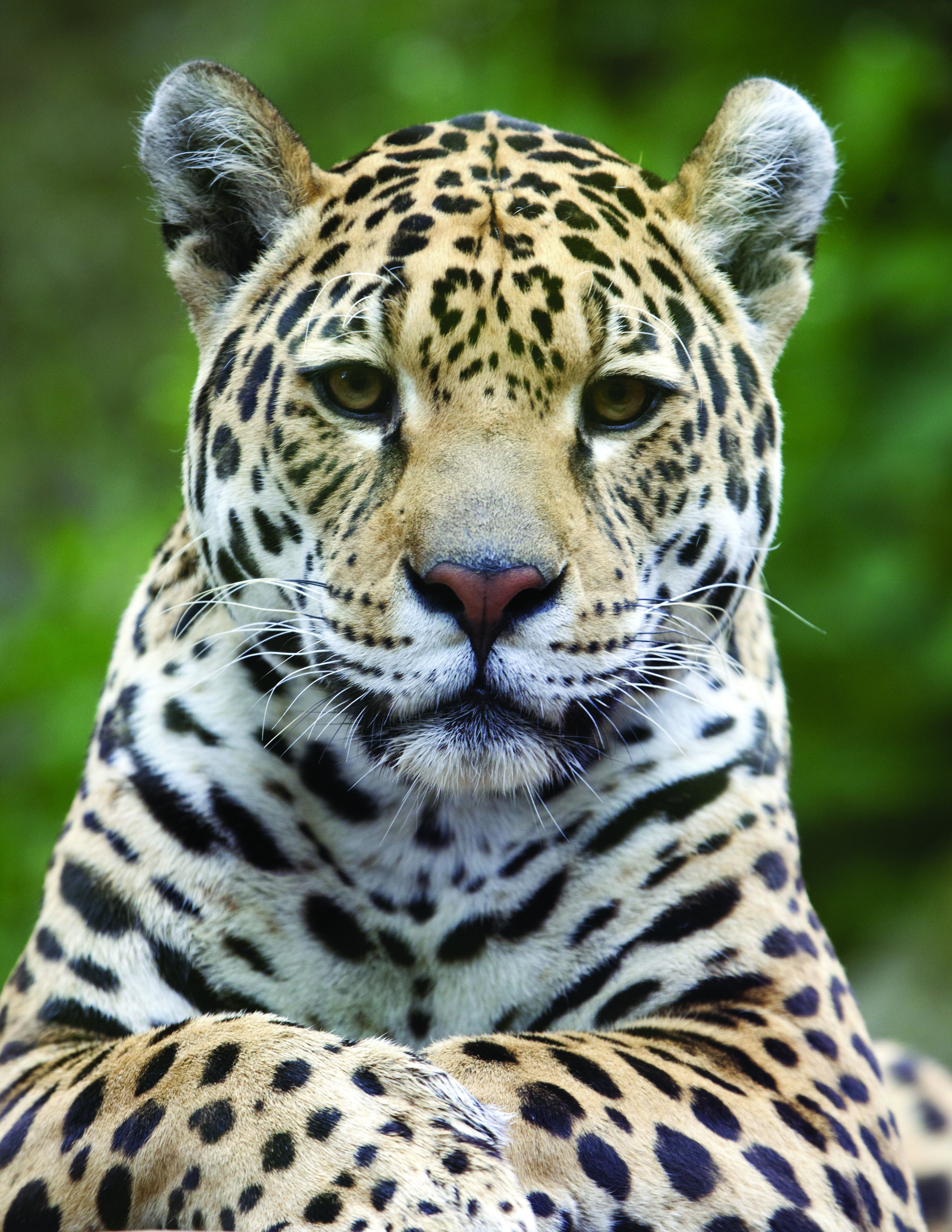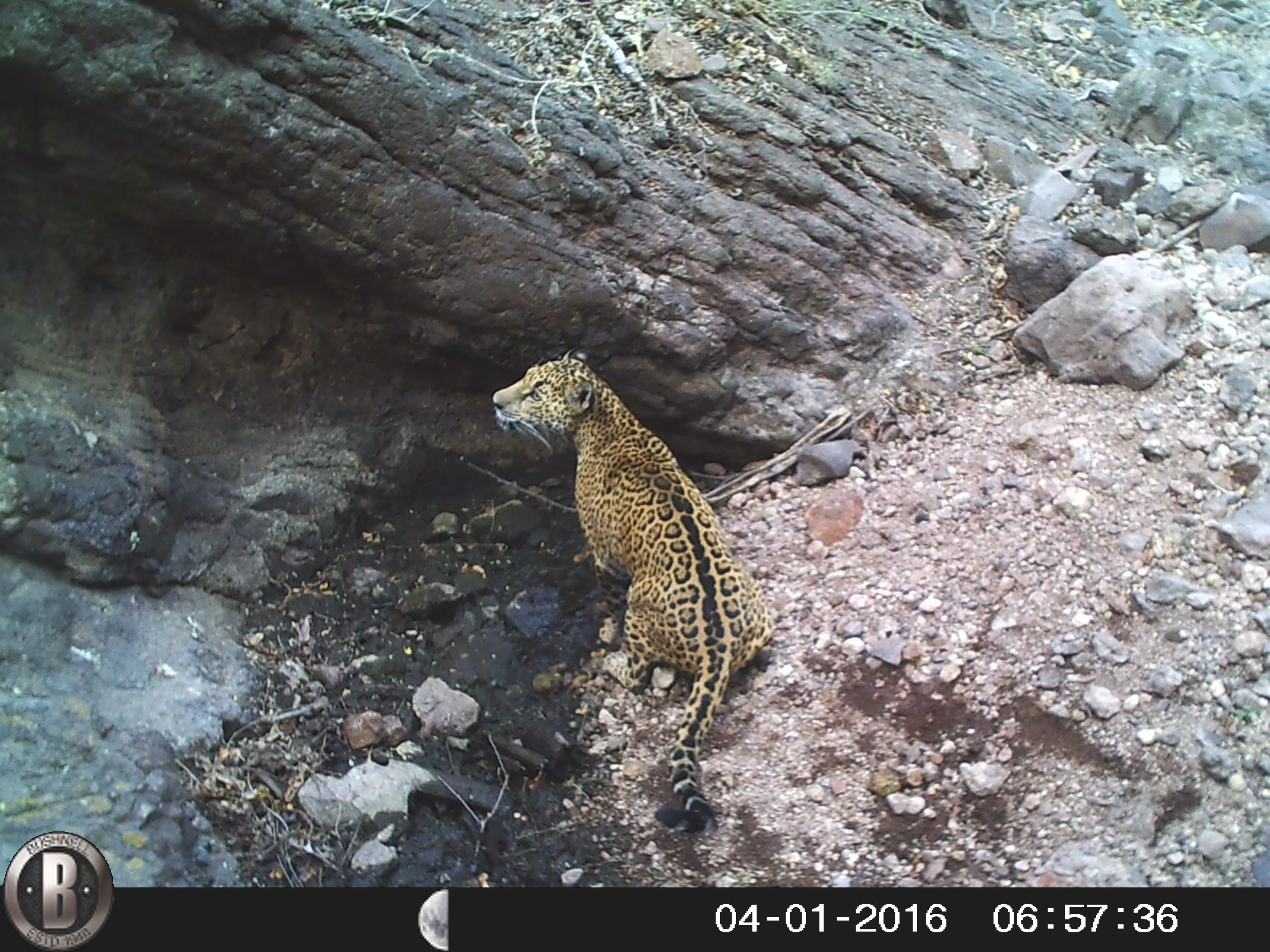For over a decade, my life has been dedicated to understanding jaguars, particularly those inhabiting the rugged landscapes of northwest Mexico and the southwest United States. My journey began in 2003 in the Sierra Madre Mountains of Sonora, Mexico, a region approximately 125 miles south of the US border. In this remote and breathtaking terrain, I had the extraordinary experience of observing two jaguars, a male and a female, alongside several mountain lions in their natural habitat. Surveying the deep canyons, towering mountains, and sweeping valleys, I searched for the telltale signs of these elusive creatures – their tracks, scat, a hidden kill, or the scratch marks on trees that serve as their territorial signatures.
 jaguar
jaguar
A year later, I volunteered for a jaguar project in Arizona, just west of Nogales. It was striking to witness the environmental parallels between these two jaguar habitats, despite the human-imposed divisions of cities, highways, and international borders. The topography, vegetation, and the shared wildlife species underscored the interconnectedness of these regions for jaguars. This observation spurred me to initiate a bi-national project in 2006, focusing on identifying the critical wildlife corridors that enable jaguars and other species to move between these vital habitats on both sides of the border.
The countless hours spent in the field, tracking jaguars across Northern Mexico and the US Southwest, have profoundly shaped my understanding of these magnificent animals. Hiking through their domain, deploying camera traps to capture their images and those of their wild neighbors, examining their kills and scat, and learning to differentiate a jaguar track from a mountain lion’s – these experiences have provided invaluable insights. Two key understandings have emerged from this immersion: first, jaguars are inherently secretive and stealthy creatures, masters of avoiding detection; and second, their movements are dictated by the fundamental necessities of survival – food, water, and mates – irrespective of human political boundaries. Adopting a jaguar’s-eye view of our shared landscape reveals the enduring reasons behind their continued presence in this region for centuries.
My work has also brought me into contact with a diverse community of individuals deeply invested in the fate of jaguars. I’ve collaborated with conservation groups, government agencies, fellow researchers, and landowners, all striving to promote jaguar conservation and foster a land ethic that allows for the harmonious coexistence of humans and these apex predators. However, I’ve also encountered skepticism and limited understanding regarding jaguar ecology and behavior. Therefore, drawing on over a decade of firsthand field observations in northern Mexico and the US Southwest, I aim to address some common questions and dispel misconceptions about these northernmost jaguars.
Jaguars in the U.S. Southwest? A Northern Mexico Perspective
While jaguars are often associated with the lush rainforests of the Amazon basin, the idea of them inhabiting Arizona might seem improbable to many. However, compelling evidence confirms their continued presence in the southwestern United States, a northward extension of their range from northern Mexico. “Borderland Jaguars” (Brown, D. and C. Lopez-Gonzalez, 2001), a comprehensive compilation of jaguar records, documents reports dating back to 1900 in Arizona and New Mexico. These records, sourced from hunting reports, photographs, and historical accounts, reveal nearly 60 confirmed jaguar sightings up to 1996, some as far north as the Grand Canyon.
Considering that jaguars have maintained territories in the U.S. Southwest and northern Mexico for over a century, it unequivocally affirms their native status and belonging to this region. This historical perspective, particularly when viewed from northern Mexico, highlights the long-standing connection of jaguars to the broader landscape, transcending contemporary political borders.
 jag-apr-2011
jag-apr-2011
Male jaguar photographed in the sky islands of Sonora, northern Mexico, approximately 30 miles south of the US-Mexico border. Photo courtesy of Sky Island Alliance/El Aribabi.
Jaguar Comeback? They Never Left Northern Mexico and the Southwest
The notion of jaguars “returning” to the US Southwest is a common misconception. In reality, from a northern Mexico viewpoint, jaguars never truly left the region. They are masters of stealth, thriving in the anonymity of remote locations. Their inherent aversion to human presence drives them to seek refuge in rugged terrains, canyons, and creek beds, far from settlements and human activity.
The continuous expanse of suitable habitat spanning northern Mexico and the US borderlands is crucial to their persistence. The north-south alignment of mountain ranges, interconnected by valleys extending from the Sierra Madre in northern Mexico to the Mogollon Rim, provides vital pathways. These natural corridors, augmented by habitat connectivity across large private lands and conservation areas in Mexico, and extending into national parks, wildlife refuges, and protected areas in the United States, are essential for the long-term survival of jaguars. These interconnected protected areas act as stepping stones, facilitating jaguar movement and dispersal into new potential territories throughout the region, originating from source populations in northern Mexico.
Furthermore, northern Mexico and the Southwest offer a rich and diverse prey base for jaguars. White-tailed and Mule deer, along with White-collared peccary (javelina), are their preferred meals. However, their diet also includes coatis, skunks, rabbits, jackrabbits, quail, wild turkey, and other medium-sized mammals abundant in northern Mexico and the borderlands. I have even observed jaguars scavenging on carrion, an unusual behavior for felines, highlighting their adaptability, though this should not lead to the misconception of jaguars as livestock predators.
Human awareness, rather than a change in jaguar behavior, is the significant shift of the last two decades. The 1996 photographs taken by Arizona houndsmen, capturing two different jaguars in separate border locations, were pivotal. Their willingness to share these images ignited the realization that jaguars could indeed travel north and establish territories in the United States. Since then, researchers, conservation organizations, and citizen scientists have intensified monitoring efforts, deploying camera traps, tracking jaguar signs, and documenting observations. Collaborative initiatives have emerged, involving landowners in conservation efforts, offering compensation for jaguar protection, and promoting alternative economic activities that minimize impacts on jaguars and their prey in northern Mexico and the US Southwest.
Female Jaguars: The Elusive Matriarchs of Northern Mexico and Beyond
The consistent detection of male jaguars in Arizona since 1996, with at least ten different individuals recorded over two decades, contrasts with the lack of confirmed female jaguar sightings in the U.S. since 1963. However, from a northern Mexico perspective, the continued presence of males strongly suggests the existence of breeding females, their mothers, likely residing in source populations in northern Mexico. Female jaguars typically have smaller home ranges than males and exhibit greater caution, particularly when raising cubs or avoiding encounters with other jaguars or predators like mountain lions and black bears. This inherent caution naturally leads to less frequent detection. Therefore, the absence of photographic or other records of female jaguars in the U.S. does not equate to their absence in the broader region, including northern Mexico. Secrecy and elusiveness are fundamental aspects of jaguar life, especially for females ensuring the survival of their young in the remote landscapes of northern Mexico and the southwestern US.
 hunt2494
hunt2494
Female jaguar. Photo courtesy of Nature and Culture International.
Jaguar recovery in the region, particularly in the U.S. Southwest, is a long-term endeavor, but progress is being made, driven by the source populations in northern Mexico. Sustained, long-term surveys are crucial in suitable habitats across southern Arizona, New Mexico, and northern Sonora to locate both male and female jaguars. Habitat protection is paramount, and proposed barriers must be carefully evaluated for their potential impact on jaguar movement and survival, ensuring that conservation and development can coexist.
Ultimately, the conservation and recovery of the northern jaguar population hinges on collaborative actions, partnerships, and binational efforts between the U.S. and Mexico. Sharing successes, lessons learned from setbacks, and fostering joint conservation strategies are essential for the benefit of jaguars and the broader biodiversity of this interconnected region. Jaguar conservation in northern Mexico and the US Southwest serves as an umbrella for protecting countless other species, habitats, and promoting a shared stewardship of this remarkable natural heritage.
Written by Sergio Avila, Conservation Research Scientist